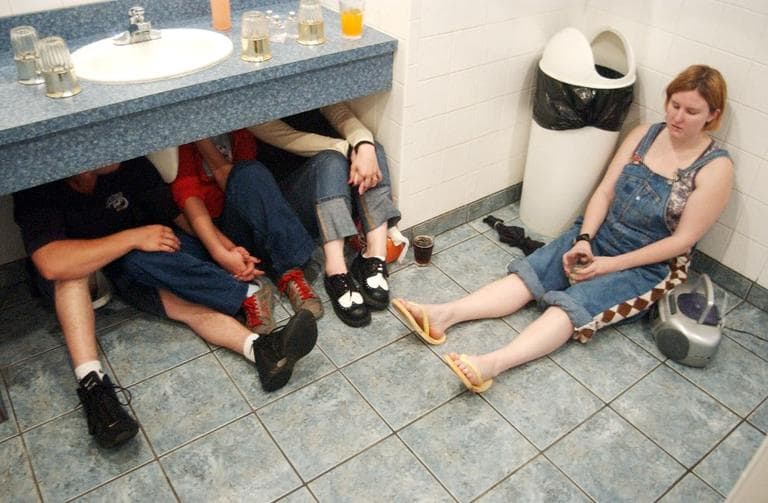Advertisement
Expert Tips On Surviving A Major Tornado
Resume
The tragic aftermath of the twister that ripped through Moore, Oklahoma, raises questions about how people living in hurricane zones can protect themselves.
Are home-based shelters really enough to hold back the force of a F5 category tornado, which can have winds upwards of 300 miles per hour? And what about people who don't have home-based shelters?
Michael Smith of AccuWeather Enterprise Solutions, which researches severe weather detection, told Here & Now that "unless you are underground and in a reinforced shelter, your chances of survival are not very good," in a tornado as strong as the one that hit Moore, Okla.
Most homes in Moore, Okla. don't have basements, Smith said, noting that he used to live in the area. One of the most practical safety measures is to install a "safe room" inside the home, Smith said.
These rooms, which can double as a closet or storage area, typically cost $5,000 to $6,000.
"It's not cheap, but it's reasonably priced," Smith said. "I've seen some housing developments in some areas where they actually build the safe room right into the foundation."
He offered these tips for improving your odds of surviving a tornado, if a shelter, safe room or basement stairwell aren't an option:
- Get under a pool table or other sturdy furniture
- Close yourself into a bathroom or closet deep inside the house
- Wear a football helmet (or other kind of helmet) if you have one
Guest:
- Michael Smith, senior vice president for AccuWeather Enterprise Solutions and author of "Warnings: The True Story of How Science Tamed the Weather."
This segment aired on May 21, 2013.